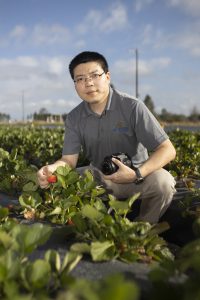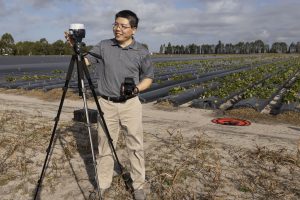Historical Evolution of Selective Breeding and Genetic Traits
For many centuries, farmers and ranchers have made careful selections from their crops and herds based on desirable qualities. The selected individuals are then bred to produce a new generation which, hopefully, repeats those qualities. This process has produced the domesticated crops and creatures we associate with modern agriculture, such as corn, wheat, chickens, or cattle. A comparison of any of these with their wild counterparts is often surprising. For example, we associate corn with fields of tall plants bearing ears of corn that are up to a foot long, but the wild plant… well, there is no wild corn. It was developed by farmers in Mexico from a small grass with an insignificant seed head that bears little resemblance to our modern crop, which has become one of the most valuable food crops in the world and, in tons, the most produced.
The work of scientists in the 19th century laid the foundation for a more systematic and scientific approach to the selection and propagation of plants with desirable traits. The discovery of DNA (deoxyribonucleic acid) in the mid-20th century and the subsequent rapid advances in genetic manipulation have led to many new varieties of plants.
Of course, DNA is not the whole story. Individuals – whether a single stalk of corn or a human being – begin with a certain genetic makeup, and as they grow, their genes are expressed in various ways, some that seem fairly static, like eye color, but others, like hair color and pattern, develop over time as the individual increases in size and moves through various life stages. Various factors, such as nutrition and environment, help shape the individual. For example, despite the height that one’s genes might dictate under ideal conditions, a lack of nutrition or a specific health event can limit an individual’s adult height. The opposite is true as well: a hormonal irregularity due to genetics or disease could cause extra growth. The characteristics of an individual that are indicated in their genes are called their genotype, but the actual characteristics that are observed as the individual grows are called the phenotype, and observing the phenotype is how plants have been assessed from the beginning of agriculture.

Revolutionizing Plant Observation with Advanced Technologies
Dr. Xu Wang specializes in observing phenotypes. When he sees a field of corn, wheat, or strawberries, he sees thousands of individuals and knows that some have qualities that deserve to be developed. But in a field of thousands of these individuals, how does one find deserving plants? Dr. Wang combines a number of cutting-edge technologies to answer this question. He can use truck-mounted cameras or unmanned aerial vehicles (UAVs, or drones) to scan a field and collect images of thousands of plants in a single pass. He then uses computer vision and high-speed computers to develop standardized measures of the plants. Using the methods of machine learning, Wang can train the computer what to look for, and the more the computer examines plant images, the better it gets at finding matches for desirable characteristics. Wang is an assistant professor in the Agricultural and Biological Engineering Department working in several emerging sciences. Machine learning and computer vision have already been referred to, but Wang also works in robotics to automate data collection and in phenomics.
If that last term is unfamiliar, it may be because phenomics is a new discipline within biological science with the goal of changing the observation of phenotypes from a descriptive practice into a quantitative one. This will allow observations of plant characteristics that will make it possible to evaluate them according to standardized measures. Wang is one of several scientists around the world who are working to develop and apply the methods of this new discipline.
Harnessing Phenomics for Plant Development and Adaptation
The standardized methods of phenomics combined with automated methods of data collection and analysis are opening a new window on understanding how plants develop and how they interact with their environment. This is critical in a world with changing climate patterns. Scientists must understand how crops are responding to these changes and if they are adaptable. Phenomics will help scientists assess whether certain areas will continue to be good locations for traditional crops, and phenomics can help recommend the right crops for a particular area. It can also help direct plant breeders in developing plants with characteristics that are more suitable for the changing climate in specific areas.
Phenomics has led to a lab-based method called “high throughput.” To an observer, this might look like traditional greenhouse growing, but the high-tech methods of data collection and analysis “supercharge” traditional plant growth experiments. More data can be collected on more plants at more stages of their life cycle. The evolution of phenotype as a plant develops can then be connected to its genetics to provide a much more complete picture of plant development.
As an example, we can look at a recent project led by Wang which led to the description of a new and useful characteristic (phenotype) of wheat: time of flowering. Measuring this characteristic on enough plants to make it statistically significant requires examining many plants repeatedly over an entire growing season. Automated methods of data collection and analysis make this possible. Wang’s team conducted this “high throughput” method in the field using vehicles specially equipped with cameras in boom arms that could photograph the test plots and deliver these images to the machine learning software. To give an idea of the scale, Wang collected 400,000 images over two growing seasons. Only with advanced computer methods is it possible to examine or process this much information.

In this case, Wang discovered that time of flowering was an inheritable trait, which means that it is controlled by a plant’s genes. Wang’s team performed an analysis to discover the genes implicated in the flowering time trait. Thus, if plant breeders wish to create plants that flower earlier in their life cycle – perhaps to take advantage of shorter growing seasons, they can benefit from Wang’s methods to selectively breed for this trait.
Boosting Wheat Resistance to Barley Yellow Dwarf Through Phenomics
An aspect of climate change that is important for agriculture is the spread of plant diseases. Modest increases in average temperatures and moisture can favor the spread of diseases, which can further reduce the productivity of important growing areas. In recent work, Wang was part of a team of scientists that examined the resistance of wheat to a particularly devastating disease called barley yellow dwarf (BYD). This disease causes shriveled grain and reduced yields. It is the most widely distributed viral disease of grains, and it affects several other crops, including barley, oats, and rice. BYD is transmitted by aphids, and because cultivated wheat has little genetic resistance to BYD, insecticides are critical in responding to an infection. However, infection with BYD can be difficult to distinguish from other diseases. Wang’s group was interested if phenomics methods could be used to diagnose BYD more accurately and locate plants that expressed higher resistance.
The experiments showed that a particular gene had a “major effect” in controlling BYD resistance in the studied wheat plants. This research also discovered a possible new source of genetic resistance in wheat. This was the first study using high-throughput phenotyping to examine BYD resistance in wheat, and the results point to new applications of phenomics methods to protect this valuable crop from its most common disease.
Wang has studied wheat extensively. Wheat is the second most produced grain in the world, and an important staple for billions of people. Many important wheat-producing areas are being affected by climate change, and the ability to develop better adapted varieties will be critical to maintaining production of this crop. Dr. Wang and his colleagues in phenomics will play a vital role.
That’s UF ABE: Big Questions, Global Reach.
This article was written by: Charles Brown
 1
1


